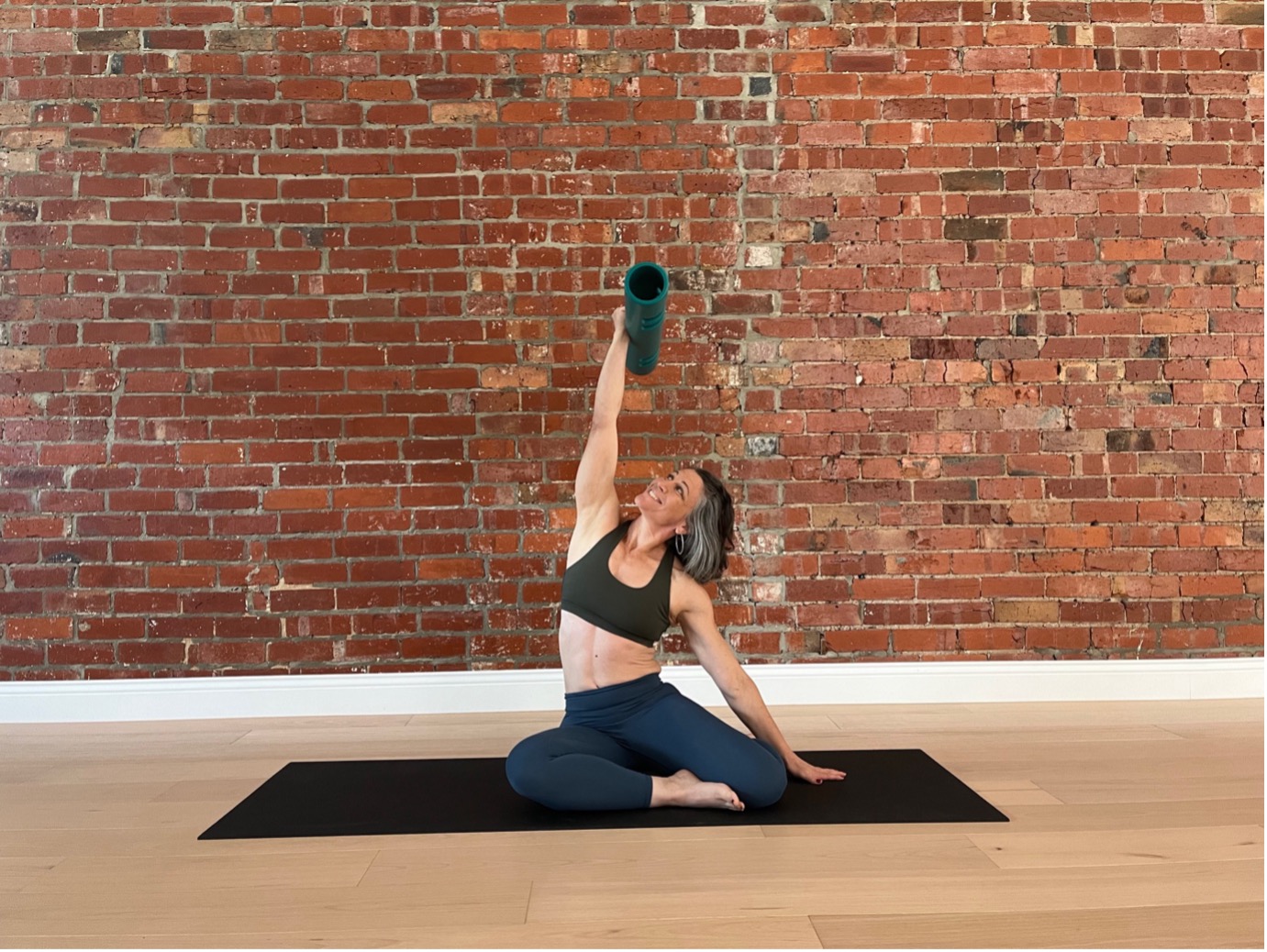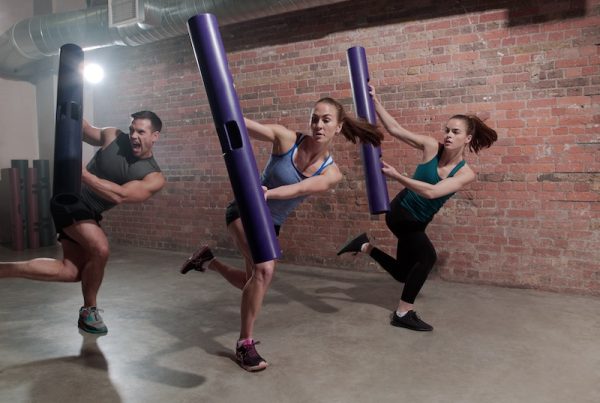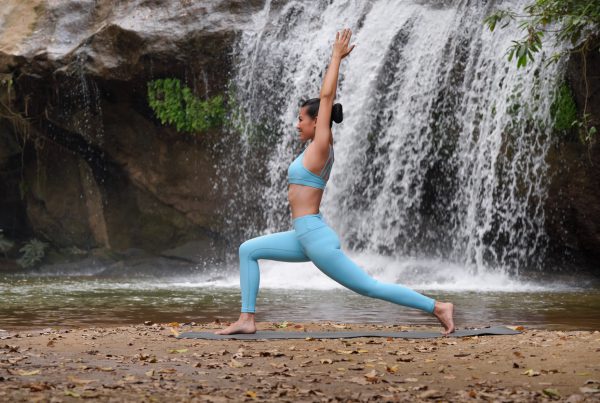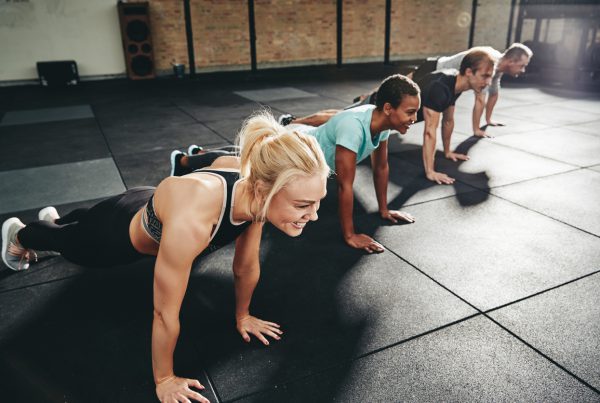Stephanie Glickman uses ViPR in Pilates sessions for teaching spinal shapes. Here, she shares how it’s done.
Flexion, extension, rotation, side flexion … these are the four movements of the spine. Each one has a unique shape. Being able to effectively cue and teach these movement patterns – and combinations of them – is a big part of our job as Pilates instructors and movement educators.
One of our most efficient ways to cue movement patterns is external cues, which draw focus outside of the body to external surfaces, rhythms and objects. Props are some of the best external cues – it’s no wonder we Pilates instructors love our multitude of props! And what better prop than ViPR!
ViPR’s hand hold allows connections into the scapular/posterior chain to help guide the spinal shapes. Its round surface is conducive to rolling and moving into the spinal shapes.
Let’s take a look at each of the four spinal shapes and how ViPR assists and informs our clients’ ability to physically understand and execute them.
Spinal flexion
Pilates examples: Roll Downs, Roll Ups, Pelvic Curl into Hip Bridge, Cat Stretch Round Back, Spine Stretch, Roll Like a Ball
In spinal flexion, the scapulae protract (stretch apart from each other and around the side of the ribs), as the lower ribs pull backwards and upwards.
Hold ViPR in a neutral grip. Cue client to “push ViPR away from you” or “push ViPR forward” to create the protraction of the scapulae that helps the ribs to pull backwards and up.
This cue also helps to create elongation (rather than compression) through the entire spinal axis, especially lower thoracic and lumbar. This is a feeling of lifting the waist long and creating space between the trunk and the legs.
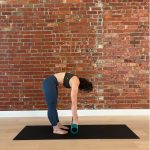
To return upright from Standing Roll Down: “Reach ViPR towards the floor as you restack the spine”
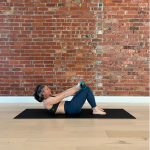
At the top of Chest Lift: “Reach ViPR out past knees”
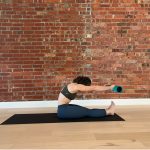
At the top of Roll Up: “Push ViPR towards the wall in front of you as you lift up through waist”
Spinal extension
Pilates examples: Swan Dive (and preps and variations), Single Leg Kick, Double Leg Kick, Rocking, Dart, Swimming
In spinal extension from prone, there is the sense of widening the collarbone while keeping the push up away from the ground (so there is still a need for protraction and muscular control from under the armpits and around the ribs).
With ViPR under the wrists/forearm in prone position, cue client to “push down into ViPR as you lift the chest up and collarbone wide” or “push down to go up”.
While this might initially seem contradictory, pushing away from the floor helps keep the integrity of the crescent-like extension shape, so the client doesn’t collapse down into the position (which would look like the scapulae jamming together and the head jutting forward).
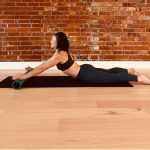
At the top of Swan Dive Prep: “Push up away from ViPR as you widen the collarbone”
Spinal rotation
Pilates examples: Spine Twist, Saw, Supine Twist, Side Lying Rotation (Chest Openers)
Spinal rotation should ideally come mainly from the thoracic spine, but often it will default to the cervical/neck (appearing as a turning of the head) or the lumbar area. Or there might be a lot of arm (shoulder joint) movement, rather than actual thoracic rotation. To avoid this and drive the movement right into the thoracic/ribcage, use ViPR as a visual cue.
For a seated spinal rotation, hold ViPR vertically using the carry grip directly in line with the nose. Cue client to “keep nose and ViPR in the same line” or “keep ViPR the same distance from the face throughout the rotation” or “keep your gaze on ViPR”.
Doing this keeps the rotation line pure, rather than letting overly mobile parts of the spine (like the neck) try to take over the movement.
You could also liken the movement to a spiral staircase, with the ribcage wrapping upwards around the spine, encouraging axial elongation.
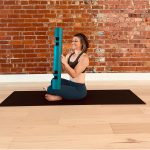
In Seated Spinal Rotation: “Keep nose and ViPR in the same line as you rotate side to side”
Spinal side flexion
Pilates examples: Mermaid, Side Bend, Side Kick Kneeling
Spinal flexion is a “C” Shape, so spinal side flexion is a side “C” shape. Like all the other spinal shapes, the element of axial elongation is still present and should be encouraged.
In a Side Bend Sit (Mermaid), ViPR is under the bottom hand. Cue client to “push down into ViPR to lengthen the top of head further to ceiling” and then “roll ViPR away”.
With side flexion patterns, it’s easy to collapse down into the side bend rather than lift up and elongate. So, rather than encouraging a big side bend, encourage a long, lengthened bend that maintains space between the lower side ribs and pelvis. As with the Spinal Extension cues, the “push up and out of ViPR” cues really accentuate this.
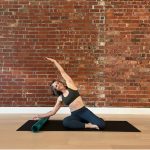
In a Mermaid: “Lift the waist tall as you push up and away from ViPR”
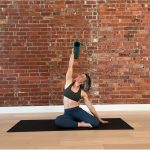
In Side Bend with Overhead Arm: “Lift waist as you push ViPR up towards the ceiling”
Multi-planar spinal movements
Multi-planar movements are combinations of the four main spinal movements. For instance, a Thread the Needle is a flexion and rotation, so cueing a Thread the Needle will be a mix of cues appropriate for both flexion or rotation. Cues and positioning of ViPR can be tailored to the particular focus you are wanting for the client.
Conclusion
With general populations, external cues are a great option for simple, effective teaching. ViPR is an especially efficient prop. Its round border can roll and guide clients into spinal shapes. The multiple handhold options allow for push and pull sensations that innately guide scapulae positioning, which directly affects the ability to create precise spinal shapes.
To learn how to teach with ViPR in your own Pilates sessions, check out our latest education from Stephanie – ViPR for Pilates


